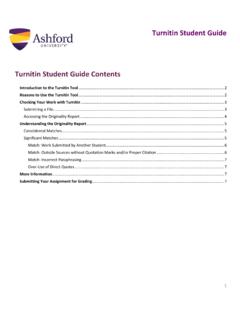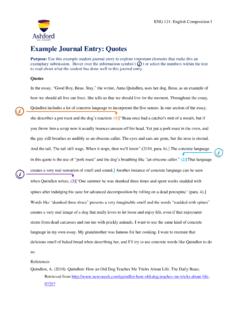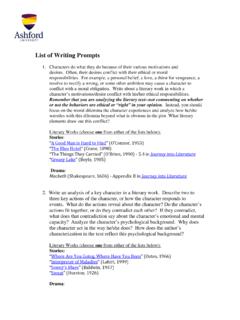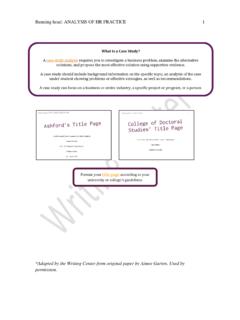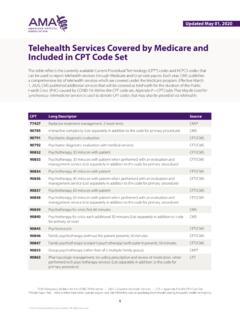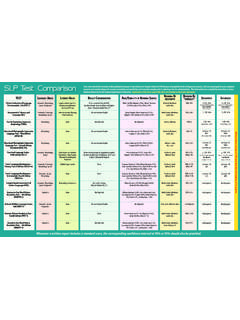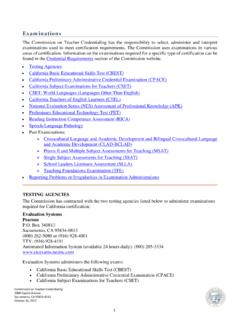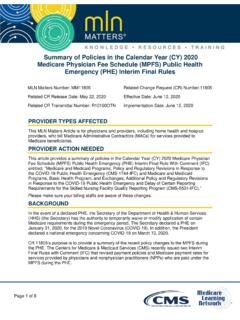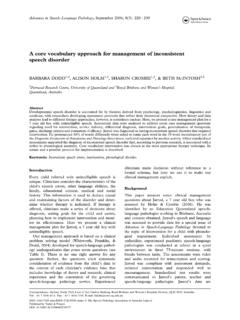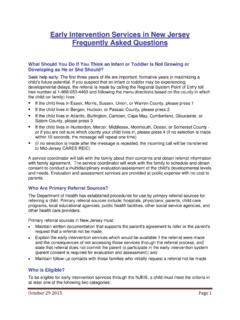Transcription of CLINICAL NEUROPSYCHOLOGY REPORT
1 PSY640 Week Six CLINICAL Neuropsychological REPORT for Mr. W CLINICAL NEUROPSYCHOLOGY REPORT Patient's Name: Mr. W Date of evaluation : 10/10/2014 Date of Birth: 10/02/24 Age: 90 Handedness: Right Education: 6 years Occupation: City worker (retired) Current Medications: Donepezil 5 mg/day, Simvastatin 40 mg/day, Levothyroxin mg/day, Losartan 50 mg/day, Warfarin 3 mg/day, Advair Inhaler, Ventolin Inhaler, Alendroate Sodium 35 mg/week, Vitamins B12 and D3 evaluation Completed by: Dr. K., evaluation Time: One hour diagnostic interview (90791); One hour test administration, scoring, interpretation and REPORT (96118 x 3) REASON FOR REFERRAL: Attorney Mr. X referred Mr.
2 W for an evaluation of his decision-making capacity. HISTORY OF CURRENT SYMPTOMS: The symptom description and history were obtained from an interview with Mr. W, his sister, and his cousin. Mr. W stated he was seen by a physician in Michigan last year at his son s urging and was diagnosed with dementia. Subsequently, according to the patient, his son reportedly took control of his finances, has withdrawn approximately $28,000 from the patient s account, and has sold the patient s coin collection. Mr. W does not feel the diagnosis of dementia is correct and would like to resume control over his financial matters. Reportedly, the incident that initiated the diagnosis of dementia occurred in 2011 when Mr.
3 W was living with his son Anthony. He stated he saw the silhouette of a person walking in another room in the house and believed it was the Boogie Man. Several days later, he had what appeared to be a syncopal episode ( I blacked out ) and fell while walking out to the garage. He stated he felt someone pounding my head and pulling me down the stairs, and he believed this was also the Boogie Man . He was reportedly taken to the ER and released; however, after this incident the patient stated his sons became concerned with his thinking, and this eventually led to an evaluation with a physician and a diagnosis of dementia. Mr. W denied any other instances or auditory or visual hallucinations beyond those described above.
4 He was living in A State (initially with his family and then on his own), but in 20XX, moved to Another State to live with his sister and brother-in-law. According to his sister and his cousin, the patient has not demonstrated any problems with memory or other areas of thinking. He stopped driving two years ago at the insistence of his son, but he remains independent in other activities of daily living, including managing his own medications, self-care, and occasional household chores. He also enjoys playing cards and playing electronic poker, and there has been no reported decline in his ability in these areas. Summary of Previous Investigations and Findings: No previous neuropsychological evaluations.
5 PAST MEDICAL, NEUROLOGICAL, PSYCHIATRIC, SUBSTANCE USE HISTORY: (Inclusive review of symptoms and disorders; only positive features listed) Hypertension, hypercholesterolemia, hypothyroidism, COPD, asthma, myocardial infarction in the past (exact date unknown), and osteoporosis. The patient denied any neurological or psychiatric history beyond that described above. He does not drink alcohol and quit smoking in 1940. He has no history of recreational drug use. BIRTH, DEVELOPMENTAL, OCCUPATIONAL HISTORY: (Review of perinatal factors, early childhood development and milestones, academic history and achievement, employment) No reported delays in reaching developmental milestones.
6 The patient stated he completed 6 years of formal education and worked for the city in the sewer division for many years. FAMILY HISTORY: (First degree relatives; only pertinent features reported) The patient s mother reportedly died of a stroke at age 57, and the patient s father died in an accident when the patient was 14. The patient has one full brother, age 81, who is reportedly in good health, and one half-brother with whom CONFIDENTIAL he does not have regular contact. The patient has five children (three sons and two daughters), but he and his wife did not live together consistently at the time the children were born, so he stated he is not sure he is the biological father of his three oldest children.
7 He reported he currently has no ongoing contact with any of his children. PSYCHOSOCIAL HISTORY AND CURRENT ADAPTATION: (Current living situation, social relationships, activities of daily living) The patient lived in A State most of his life, but moved to Another State to be closer to his children about a year ago. He was living with his son and then Another Son until 20XX when he moved into an independent apartment. He lived alone for one year before he moved to Another State to live with his sister and brother-in-law due to his ongoing conflicts with his son regarding financial issues. CURRENT EXAMINATION: Review of records; CLINICAL Interview; Cognitive Assessment: Wechsler Test of Adult Reading (WTAR); Wechsler Adult Intelligence Scale-IV (WAIS-IV) (partial); Attention Tests: WAIS-IV Digit Span, Trail Making Tests, RBANS Coding, RBANS Semantic Fluency; Language Tests: RBANS Naming Test; Visuospatial Tests: RBANS Figure Copy and Line Orientation, Target cancellation; Learning/Memory Tests: RBANS Word List, Story and Figure recall; Reasoning/Abstraction: WAIS-IV Similarities BEHAVIORAL OBSERVATIONS: The patient arrived on time for his appointment and was accompanied by his sister and his cousin.
8 He was casually dressed and neatly groomed, and his social interpersonal skills were preserved. He was very pleasant and put forth good effort throughout the evaluation . Thought processes were logical and goal directed, and there was no indication of hallucinations, delusions, or other psychoses. No overt behavioral indications of a mood disturbance were observed, and a full range of affect was demonstrated. The results of this evaluation are considered reliable and valid for interpretation. SUMMARY OF FINDINGS: Based on his educational history (6th grade) and performance on the WTAR (est. FSIQ = 68) the patient s estimated level of premorbid functioning would be within the low-average to borderline range overall.
9 The remainder of the examination was interpreted with the expectation of performance at this level. The patient was fully oriented with the exception of the city, which he did not know. He was able to give detailed information ( , specific dates) of his autobiographical history, and his performance on formal memory testing did not indicate any type of retentive memory disturbance. Although he had slight difficulty encoding new information, there was no loss of information over time. The patient s speech was fluent with normal articulation, and rate and comprehension of auditory information was intact. No significant impairments were noted in naming, reading, or writing.
10 Visuospatial abilities were an area of relative weakness, but there was no indication of hemispatial neglect or inattention, and object recognition was preserved. It is likely his poor performance on the RBANS Figure Copy and Line Orientation was due to difficulties in higher level visuospatial processing and executive functions. Abstract verbal reasoning was within normal parameters. Immediate attention span was intact, and he performed within normal limits on most tests of sustained attention. His score on the RBANS coding subtest, which also has a visuospatial and motor component, was the only area that was below expectation. TESTING SUMMARY.
